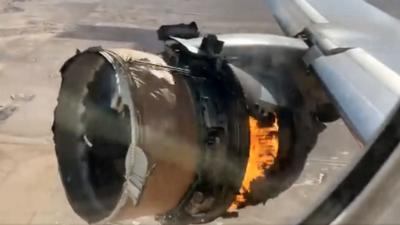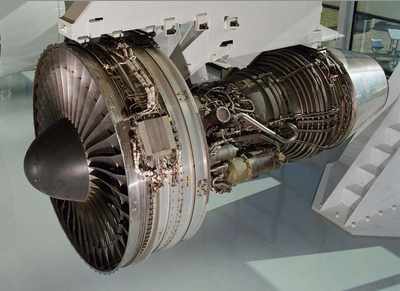Mon, Mar 08, 2021
There Was No Evidence Of A Fuel-Fed Fire
The NTSB has published an investigative update for its ongoing investigation of the Feb. 20, 2021, United Airlines flight 328 engine failure event.

UAL flight 328 experienced a failure of the right Pratt & Whitney PW4077 engine shortly after takeoff from Denver International Airport, Denver. There were no injuries reported, and the airplane sustained minor damage.
The investigative update does not contain analysis and does not discuss probable cause in this ongoing investigation. As such, no conclusions regarding the cause of the engine failure should be made based on the information contained in the update. The information in the update is preliminary and subject to change as the investigation continues.
Facts gathered to date in the investigation, and provided in the update, include:
- Initial examination of the right engine fire damage found it was primarily contained to the engine's accessory components, thrust reverser skin, and composite honeycomb structure of the inboard and outboard thrust reversers.
- The spar valve, which stops fuel flow to the engine when the fire switch is pulled in the cockpit, was found closed – there was no evidence of a fuel-fed fire.
- Initial examination of the right engine fan revealed the spinner and spinner cap were in place and appeared undamaged.
- All fan blade roots were in place in the fan hub, two blades were fractured.
- One fan blade was fractured 7.5 inches above the base at the trailing edge. The fracture surface was consistent with fatigue.
- The second fractured blade exhibited indications of overload failure, consistent with secondary damage.
- Initial review of maintenance and inspection data for the blade with the fatigue fracture, revealed it had experienced 2,979 cycles since its last inspection. This blade underwent thermal acoustic image inspections in 2014 and 2016. Inspection data collected from the 2016 inspection was examined again in 2018 because of a Feb. 13, 2018, incident involving a Boeing 777 with Pratt & Whitney PW4077 engines.

The engine fan blade with the fractures consistent with fatigue was sent to the metallurgical laboratory at Pratt & Whitney for further examinations led by a senior NTSB metallurgist. Preliminary findings from the scanning electron microscope examination identified multiple fatigue fracture origins on the interior surface of a cavity within the blade. Efforts to further characterize the fracture surface, including identifying the primary origin and counting striations, are ongoing. Additional work is underway to further characterize secondary cracks identified through fluorescent penetrant inspection. The NTSB metallurgy group also plans to analyze the blade's chemical composition and microstructure near the fracture surface.
More News
Aviation Governance Secured...At Least For a While The National Business Aviation Association similarly applauded the passage of the FAA's recent reauthorization, contentedly recou>[...]
Emphasis On Growing The Future of Aviation Through Concentration on 'AFFORDABLE FLYERS' It's been a number of years since the Latest Edition of Jim Campbell's HUGE SportPlane Resou>[...]
Amazilia Aerospace GmbH, Develops Digital Flight Control, Flight Guidance And Vehicle Management Systems Textron eAviation has acquired substantially all the assets of Amazilia Aer>[...]
Honeywell's Primus Brings New Tools and Niceties for Hawker Operators Hawker 4000 business jet operators have a new installation on the table, now that the FAA has granted an STC f>[...]
Company Celebrates Niche-but-Important Advancement in Industry Standards Echodyne has announced full integration of its proprietary 'EchoFlight' radar into the e American Aerospace>[...]
 Bolen Gives Congress a Rare Thumbs-Up
Bolen Gives Congress a Rare Thumbs-Up The SportPlane Resource Guide RETURNS!!!!
The SportPlane Resource Guide RETURNS!!!! Buying Sprees Continue: Textron eAviation Takes On Amazilia Aerospace
Buying Sprees Continue: Textron eAviation Takes On Amazilia Aerospace Hawker 4000 Bizjets Gain Nav System, Data Link STC
Hawker 4000 Bizjets Gain Nav System, Data Link STC Echodyne Gets BVLOS Waiver for AiRanger Aircraft
Echodyne Gets BVLOS Waiver for AiRanger Aircraft




